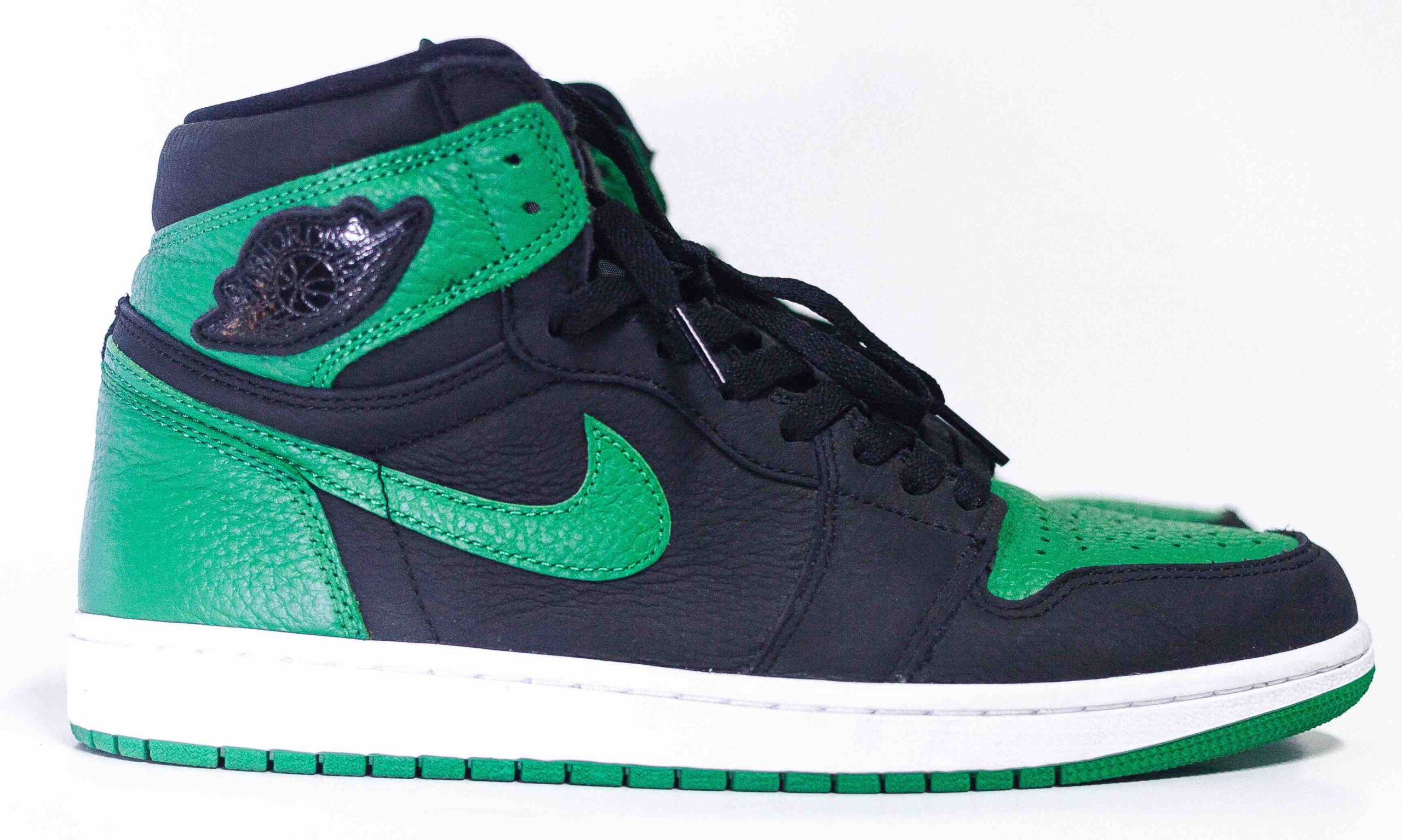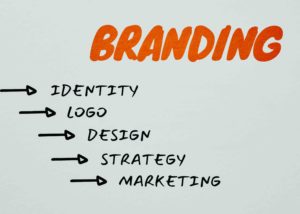Effective Branding: An Introduction
In the vast marketplace of ideas and products, branding stands as the beacon that guides consumers through the labyrinth of choices. It’s the art and science of shaping perceptions, emotions, and expectations surrounding a product, service, or organization. Effective branding is not merely about logos and slogans; it’s about crafting a narrative that resonates deeply with your target audience, fostering their trust, loyalty, and ultimately, advocacy of your brand.
As businesses navigate the ever-evolving landscape of consumer preferences and market dynamics, understanding the fundamentals of effective branding has become paramount.
The importance of effective branding cannot be overstated. In today’s hypercompetitive environment, where consumers are bombarded with countless options vying for their attention, an effective branding strategy serves as a powerful differentiator. It will not only help your brand stand out amidst the noise but it will also cultivate a sense of familiarity and trust among consumers.
An effective branding strategy can command premium pricing, attract top talent, and even weather crises with resilience. Moreover, in an era dominated by social media and digital connectivity, effective branding has transcended traditional marketing to become a pervasive force that shapes perceptions across various touchpoints.
It is with this backdrop that we delve into the core principles of effective branding, encapsulated by what we refer to as “The 5 C’s of Effective Branding.”
This article aims to demystify the intricacies of effective branding by dissecting its key components and explaining the strategies that underpin success in today’s dynamic marketplace.
By exploring the five essential pillars of effective branding, namely, clarity, consistency, cohesion, connection, and creativity, we seek to equip your brand with actionable insights to elevate your branding efforts.
Whether you’re a seasoned marketing professional seeking to refine your brand strategy or an entrepreneur embarking on a new venture, understanding the principles outlined in this article about effective branding can provide you with invaluable guidance in navigating the complexities of branding.
Join us as we embark on a journey to unlock the secrets of effective branding and empower your brand to forge lasting connections with your target market segment or niche in an increasingly competitive landscape.
The Role of Clarity in Effective Branding
Clear Brand Messaging
What makes your product or service different and superior or attractive to a prospective customer? How will you deliver this promise? Is your brand identity and your brand purpose stated with clarity? This is the essence of your value proposition.
Your value proposition is the promise you make about your products or services. It should be brief and straight to the point. It should resonate with your audience. It should be persuasive and believable.
Take Apple’s value proposition for instance. Apple understands effective branding because its value proposition revolves around the quality of both its hardware and software. User experience (UX) is topmost in its products’ design. Apple products are associated with innovation, reliability, and much more.
So what is your value proposition? If you have to think about it or are unsure what it is, how will your customers know what value you propose to deliver?
Related to your value proposition are your brand’s promise and your unique selling proposition.
A “brand promise” is exactly what the phrase says: it is the promise you make to your customers. Your brand promise may be associated with your brand logo, color scheme, and other brand elements but these elements are not your brand promise.
Your brand promise is what you promise to deliver to your customers. It is a promise that you must deliver again and again and consistently. Did you promise a next-day delivery? Then your customers expect you to deliver on a promise of 24-hour delivery.
Take FedEx for instance. Its brand promise is “Deliver on time, every time.” This brand promise has clarity and brevity written all over it. It is at the core of everything FedEx does. Its logistics is at the core of FedEx’s service delivery brand promise of “Deliver on Time, every time.” The company has its bespoke logistics software for effective planning and management of its strategically located warehouse hubs and fleet of delivery vehicles.
Brand Communication Clarity
Distinct Brand Identity
(Insert a 3 or 4-logo Gallery Here)
With effective branding, you must have distinctive features that stand your brand out from the competition. A common example is the company logo. Successful brands like:
- Apple with its…..,
- Nike with its …logo and “Just Do It” tagline,
- The triple-bar stripes of Adidas,
- Windows with its start-up sound
- Amazon with its….., and
- Coca-Cola with its uniquely shaped bottle with red and white color and packaging.
These are successful examples of where effective branding created distinctive brand logo designs and color schemes that can stand alone without the support of their brand names.
In addition to your brand logo, other elements that make for effective branding include consistent typography and color schemes.
A strong brand identity evokes emotions, shapes perceptions, and fosters recognition, enabling consumers to form strong associations with your brand.
By cultivating a distinct brand identity, your brand can establish a unique identity in the minds of consumers, driving preference and loyalty for your products or services.
Clear Brand Positioning
“A positioning statement is a brief description of a product or service and an explanation of how it fulfills a particular need of the target market. The goal of a positioning statement is to align marketing efforts with a company’s brand and value proposition.” – Hubspot.com
A clear brand positioning statement helps you define who you are and what you stand for with the competition. As your brand cannot be everything to every customer, you must create a brand position that is based on your unique value proposition.
Your differentiation strategy and the market segment you compete in will depend on your unique value proposition.
To craft an effective branding positioning statement, you must address the following questions:
- What is the purpose for which you are in business?
- What market needs do you want to serve or are you serving?
- Who is your ideal customer?
- Who are the current top brands in your market segment or niche?
- Based on the above, how do you wish to position your brand?
A well-defined brand positioning strategy helps consumers understand what sets your brand apart and why they should choose your brand over the alternatives. By establishing clear effective branding positioning, your brand can carve out a distinct market niche and attract customers who resonate with your values and offerings.
Consistent Brand Voice
for effective branding, you must have a consistent brand voice that ensures that your brand’s personality and your messaging remain uniform across all channels and touchpoints.
It will reflect your brand’s tone, style, and values, and in the process will provide a cohesive and recognizable identity that resonates with your target audience.
Consistency in brand voice fosters trust, credibility, and authenticity. It reinforces your brand’s identity and builds long-term relationships with your audience.
By maintaining a consistent brand voice, your brand can establish a strong presence in the minds of your consumers and reinforce your positioning in the marketplace
Brand Consistency: Building Trust Through Unified Identity
In the dynamic landscape of branding, consistency emerges as a cornerstone principle, guiding brands toward establishing trust, recognition, and loyalty among consumers. Across platforms, from visual identity to messaging and values, maintaining consistency will ensure a seamless brand experience that will resonate with your audience and foster an enduring connection with them.
Brand Consistency Across Platforms
In an era characterized by omnichannel marketing, brands interact with consumers across a multitude of platforms, including social media, websites, print media, and physical stores. Consistency across these platforms is crucial to maintaining a coherent brand identity and reinforcing key brand attributes. Whether a consumer encounters your brand on Instagram, visits your website, or walks into your brick-and-mortar store, the brand experience should remain consistent, reflecting the same values, messaging, and visual elements across all touchpoints.
Consistent Visual Identity
Your brand’s visual identity serves as its most recognizable asset, comprising elements such as logos, colors, typography, and imagery. Consistency in visual identity ensures instant recognition of your brand and this fosters a sense of familiarity among your consumers. From the logo emblazoned on product packaging to the design of marketing materials, every visual element should adhere to your established brand guidelines, maintaining uniformity and reinforcing brand recall.
Uniform Brand Experience
Beyond aesthetics, brand consistency encompasses the entire consumer journey, from initial engagement to post-purchase interactions. A uniform brand experience ensures that your target consumers encounter the same level of quality, service, and messaging at every touchpoint, fostering trust and reliability. Whether they are browsing your products online, visiting your physical store, or contacting customer support, your target consumers expect a seamless experience that aligns with your brand’s promises and values.
Cohesive Brand Messaging
Effective brand messaging communicates the brand’s story, values, and offerings clearly and compellingly. Consistency in messaging ensures that consumers receive a coherent narrative that reinforces the brand’s identity and resonates with their needs and aspirations. Whether through advertising campaigns, social media posts, or customer communications, maintaining a cohesive brand message strengthens brand recall and establishes a deeper connection with consumers.
Consistency in Brand Values
At the core of every successful brand lies a set of values that define its purpose, principles, and commitments. Consistency in upholding these values across all business practices, from product development to marketing initiatives, builds credibility and authenticity. Consumers are increasingly drawn to brands that align with their values and beliefs, making consistency in brand values a key driver of trust and loyalty.
In this respect, brand consistency is not merely a matter of aesthetics or messaging; it is the bedrock upon which enduring relationships between your brand and your consumers are built. By ensuring consistency across platforms, visual identity, brand experience, messaging, and values, your brand can create a unified identity that resonates with your audience and may inspire loyalty in an ever-evolving marketplace.
Cohesion: Forging Stronger Bonds Through Unified Branding
In the intricate tapestry of effective branding, cohesion emerges as a guiding principle that weaves together disparate elements into a seamless and harmonious whole. From integrated brand elements to unified brand identity and harmonious brand messaging, cohesion ensures that every aspect of a brand’s presence aligns cohesively, fostering stronger connections with consumers and enhancing brand resonance.
Integrated Brand Elements
At the heart of cohesive branding lies the integration of various brand elements, including visual identity, messaging, and values, into a unified framework. Integrated brand elements work in concert to convey a consistent narrative and evoke a cohesive brand image across all touchpoints. Whether through your logo, colors, typography, or imagery, each of your elements plays a vital role in reinforcing your brand identity and will resonate with your target audience.
Seamless Brand Experience Reinforces Brand Effectiveness
The Cohesion of your brand elements extends beyond individual brand elements to encompass the entire consumer experience, from initial engagement to post-purchase interactions. A seamless brand experience ensures that your target consumers encounter a consistent narrative and level of quality at every touchpoint, whether online, in-store, or through customer service channels. By eliminating friction points and maintaining continuity throughout the consumer journey, your brand can cultivate loyalty and trust among your target audience.
Unified Brand Identity
A unified brand identity serves as the cornerstone of cohesive branding, embodying the essence of your brand’s values, personality, and aspirations. It encompasses visual elements such as your brand logo, design elements, and brand aesthetics, as well such intangible attributes like your brand voice and messaging. A strong and unified brand identity not only fosters recognition and recall but also communicates a sense of purpose and authenticity that resonates with consumers on a deeper level.
The Importance of Brand Coherence in Effective Branding
Brand coherence refers to the consistency and alignment of all brand elements and activities, ensuring that they work together seamlessly to convey a clear and compelling message.
From your marketing campaigns to your product offerings, every aspect of your brand’s presence should reflect its core values and positioning. Brand coherence reinforces consumer perceptions of your brand’s reliability, authenticity, and relevance, thus building trust and loyalty over time.
Harmonious Brand Messaging As an Element of Effective Branding
Effective brand messaging communicates your brand’s story, values, and offerings coherently and compellingly that resonates with your target audience. Harmonious brand messaging ensures consistency in tone, voice, and content across all communication channels, from advertising campaigns to social media interactions. By delivering a consistent and unified message, you strengthen their brand identity and forge deeper connections with your consumers.
Cohesion serves as the glue that binds together all aspects of effective branding, from integrated brand elements to seamless brand experiences and harmonious messaging.
By prioritizing cohesion in your branding efforts, you create a unified and compelling narrative that should resonate with your target audience and foster lasting relationships in an increasingly competitive marketplace.
Connection: Fostering Meaningful Bonds for Lasting Loyalty
In the realm of effective branding, connection emerges as a powerful catalyst that transforms passive consumers into loyal advocates. Through emotional brand connection, authentic relationships, brand affinity, engaging storytelling, and the formation of loyal brand advocates, your brand can forge deeper bonds with your target audience, transcending transactional interactions to create enduring relationships built on trust, empathy, and shared values.
Emotional Brand Connection
At the heart of meaningful brand-consumer relationships lies an emotional connection that transcends rational considerations. Emotional brand connection taps into consumers’ deepest desires, aspirations, and fears, resonating on a visceral level and evoking a sense of belonging and resonance. Brands that can evoke emotions such as joy, nostalgia, or inspiration forge deeper connections with their audience, fostering loyalty and advocacy beyond mere product features or benefits.
Authentic Brand Relationships
Authenticity forms the bedrock of genuine effective brand-consumer relationships, fostering trust, transparency, and mutual respect. Authentic brands align their actions with their stated values, demonstrating sincerity and integrity in all interactions with consumers. By being true to yourself and fostering genuine connections based on honesty and empathy, your brand can cultivate long-term relationships built on trust and loyalty.
Building Brand Affinity
Effective brand affinity refers to the emotional connection and loyalty that consumers feel towards a particular brand. It goes beyond mere satisfaction with your products or services to encompass a deeper sense of identification, resonance, and loyalty between your brand and your target audience. Effective brands succeed by building affinity with their target audience and fostering a sense of community and belonging among their audience, thus creating advocates who actively promote and defend the brand’s interests.
Engaging Brand Storytelling
Compelling brand storytelling captivates audiences, immersing them in narratives that resonate with their values, aspirations, and experiences. Through storytelling, an effective brand can humanize its identity, convey its purpose and values, and forge emotional connections with consumers. Engaging brand storytelling creates memorable experiences that resonate with audiences long after the story ends, thus fostering deeper connections and driving brand loyalty.
Forming Loyal Brand Advocates
Loyal brand advocates are passionate supporters who actively promote and defend the brand, often going above and beyond in their advocacy efforts. They embody the brand’s values, champion its cause, and serve as trusted ambassadors within their communities. This is one of the key factors that make an effective brand. Furthermore, brands that cultivate loyal advocates foster a sense of belonging and empowerment among their audience, turning customers into advocates who champion the brand’s interests and amplify its message.
Connection serves as the bridge that should link your brand with your audience, fostering emotional resonance, trust, and loyalty. Through emotional brand connection, authentic relationships, brand affinity, engaging storytelling, and the formation of loyal brand advocates, your brand can cultivate deeper connections that transcend transactional interactions and that create a lasting impact in the hearts and minds of your segment audience.
Creativity: Unleashing the Power of Innovation Branding
In the realm of effective branding, creativity catalyzes innovation, differentiation, and memorable brand experiences. Defined by innovative branding approaches, creative brand campaigns, unique brand expression, branding creativity in design, and out-of-the-box brand strategies, creativity fuels brands’ ability to captivate audiences, stand out in crowded marketplaces, and leave a lasting impression on consumers.
Definition of Creativity in Branding
Ineffective branding and creativity encompasses the ability to think beyond conventional boundaries. Creativity challenges the norm and reimagines brand experiences in unexpected ways. Creativity involves leveraging imagination, intuition, and ingenuity to craft compelling narratives, visuals, and experiences that resonate with your audiences on a deeper level. Creativity in branding is not limited to aesthetics but extends to every aspect of your brand’s identity, messaging, and interactions with your target audience.
Importance of Innovative and Creative Branding Strategies
In today’s hypercompetitive landscape, brands must continuously innovate and differentiate themselves to capture consumers’ attention and loyalty. Innovative and creative branding strategies enable effective brands to break through the clutter, spark curiosity, and evoke emotions that resonate with their audience. By embracing creativity, effective brands can differentiate themselves from competitors, inspire loyalty, and drive engagement in an increasingly crowded marketplace.
Examples of Brands that Embrace Creativity in Their Branding Efforts
Numerous brands have demonstrated the power of creativity in shaping compelling effective brand experiences and capturing consumers’ imaginations.
From innovative product designs to memorable advertising campaigns, these effective brands have leveraged creativity to carve out a unique identity and foster deep connections with their audience.
For example, Apple’s iconic “Think Different” campaign challenged conventional thinking and celebrated the spirit of innovation, positioning the brand as a pioneer in technology and design.
Similarly, Nike’s “Just Do It” campaign inspired millions to pursue their dreams and push beyond their limits, embodying the brand’s ethos of empowerment and determination.
Conclusion
Creativity lies at the heart of effective branding, empowering brands to innovate, differentiate, and create memorable experiences that resonate with consumers. By embracing innovative branding approaches, creative brand campaigns, unique brand expression, branding creativity in design, and out-of-the-box brand strategies, effective brands can capture consumers’ imaginations, inspire loyalty, and drive long-term success in an ever-evolving marketplace.





